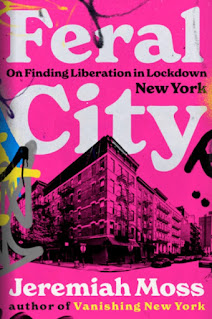I asked Frank some questions about his work and the upcoming tour.

Frank Jump
What are some of the highlights people can expect on the ghost sign tour of Greenpoint?
The Greenpoint gem will always be Syrup of Figs. Once painted over, as the paint that covers it chips away, this fading ad just keeps getting better. I need to scope out some of the route because some that I think are there may no longer be there. There is a great corset ad on Manhattan Avenue and an old depot sign on the back of someone's apartment on Nassau. Flushing Avenue going down into Williamsburg has a few treasures from the not too distant past, as is with the Ko-rec-type ad.
We can also see if the Public Baths is still there on Huron. Miss Heather will be there too, hopefully, and she will be a treasure-trove of trivia for the Greenpoint environs. Great graffiti near the northern tip of Manhattan Avenue near Newtown Creek.
What would you say makes Syrup of Figs the gem that it is?
The black paint that once covered it is slowly peeling away and it is like a reverse fading ad. It is a one of a kind. Castoria ads were abundant but this one advertises an obscure brand and still lives on. The brand, however, does not.

Frank Jump
What NYC ghost signs have you been wanting to photograph, but have been unable to?
Just recently a sign was uncovered in Middle Village Queens and because I was just hit by a car on my motorcycle, I couldn't get to it and it was covered within days. Was always wondering if the Weber & Heilbroner sign is still hiding behind one of those stretchy ads.
I would like to take another trip though the Bronx (where there is a multitude of ads) during the winter when the foliage isn't obscuring your views, as well as Staten Island which seems to be at a deficit for ads.
On an emotional level, what feelings go through you when you see something like a giant flip-flop being painted over a beloved ghost sign?
On one level, I am annoyed that other airspace was not considered. With all of the available airspace in Soho, why not use another location? Since this is a prime airspace and the landmarks rules don't apply, you can't stand in the way of progress. Be that as it may, on another level, I rationalize that 1) the paint that covers the vintage ad is made of plastic and will eventually peel, and 2) the long tradition of hand-painted ads on brick continues through Colossal Media's talented team of designers and artists.

my flickr
Finally, what's your favorite NYC ghost sign of all time? What's the vanished ghost sign you miss the most? What ghost sign do you worry most will vanish soon?
Favorite: M. Rappoport's Music. Favorite vanished: Reckitt's Blue. And it would be a shame if Suzy Perette got covered.





















































